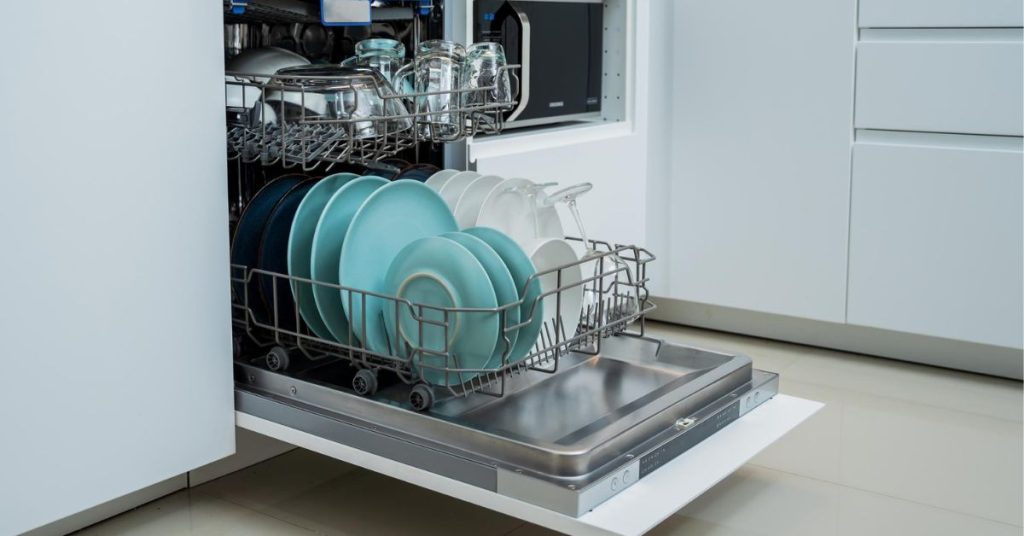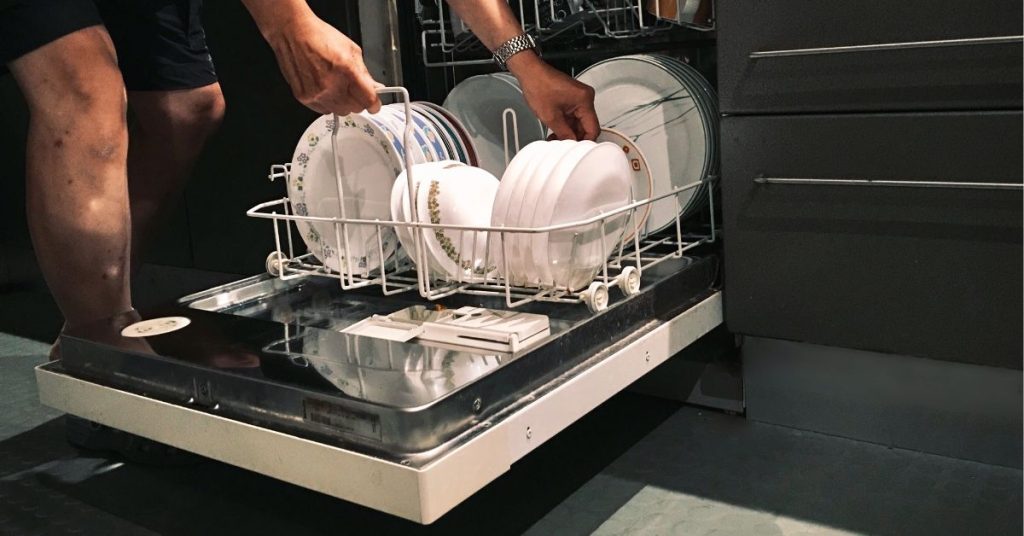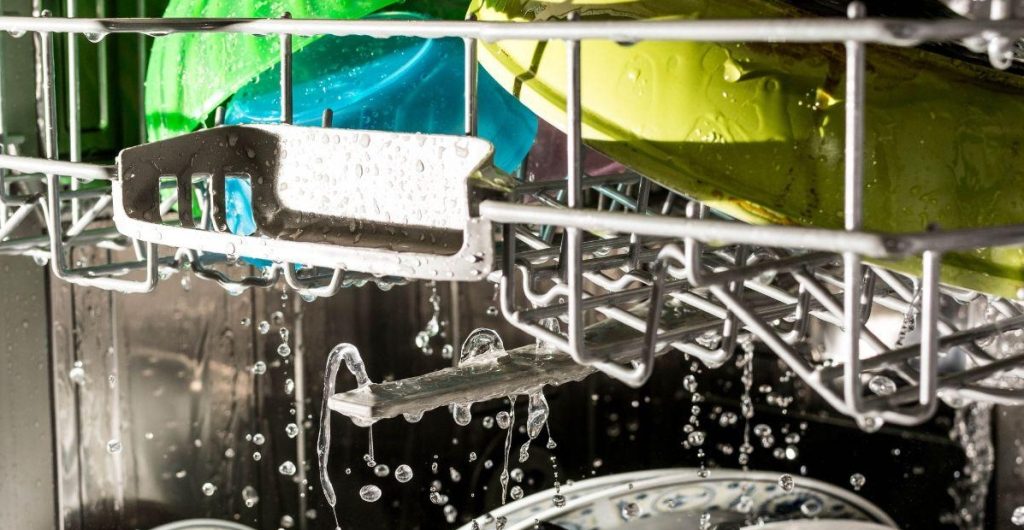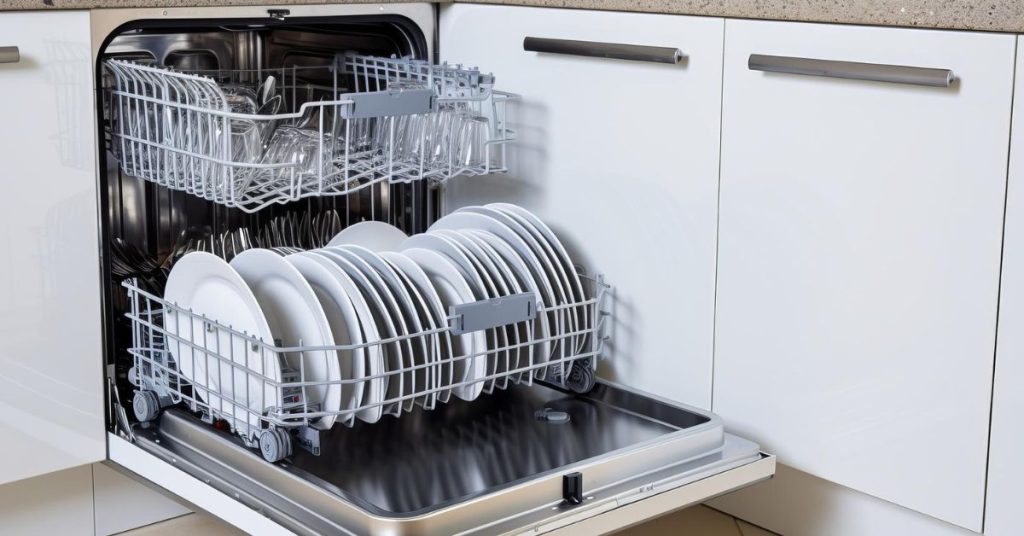Portable dishwashers have become a lifesaver for many people, especially those living in small apartments, RVs, or homes without built-in dishwashing units. But how exactly do these compact machines work to clean your dishes efficiently? In this article, we’ll dive deep into the mechanics, setup, and functionality of portable dishwashers, pulling insights from trusted sources to give you a comprehensive understanding. From the water inlet to the drainage system, we’ll break it down step-by-step, layer by layer, and even sprinkle in some extra details to broaden your knowledge. Let’s get started!
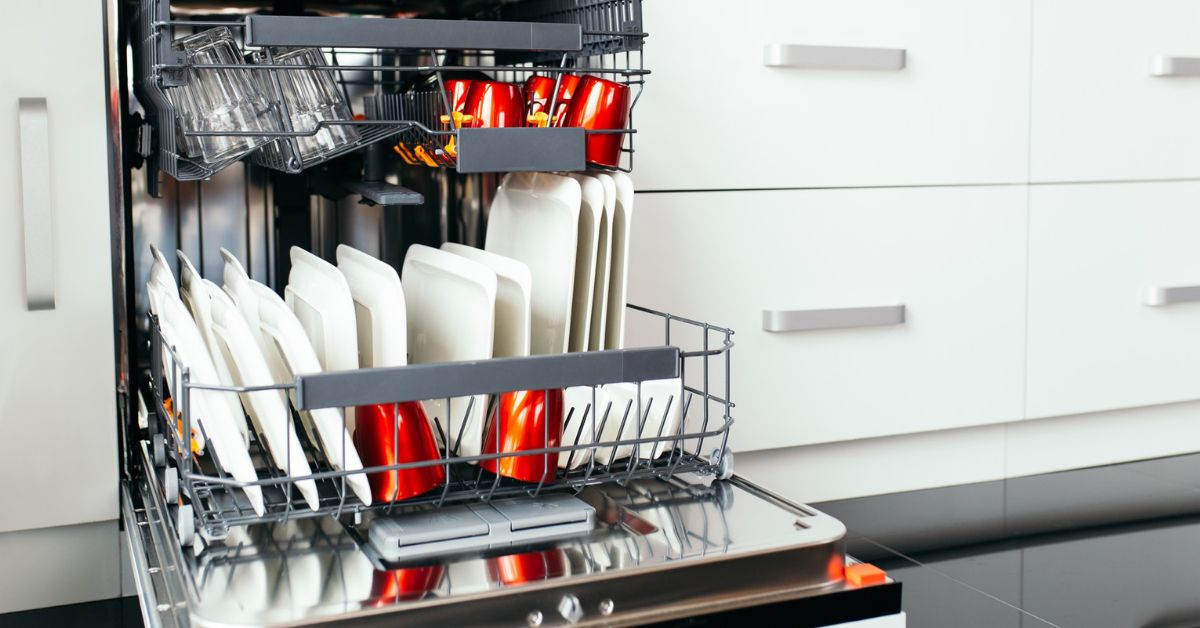
The Basics: What Is a Portable Dishwasher?
A portable dishwasher is exactly what the name implies. Unlike built-in dishwashers, drawer dishwashers, and countertop dishwashers, portables are perfect for mobility. “Washing dishes might be your family’s least favorite chore, but built-in dishwashers aren’t always the best solution, especially if you have a tiny kitchen or custom cabinetry. In such cases, a portable dishwasher may be exactly what you need,” explains Angi. These machines typically come on wheels or as countertop units, offering flexibility without sacrificing cleaning power. They connect to your kitchen faucet, use standard electrical outlets, and can be stored away when not in use—ideal for renters or anyone with limited space.[((What Is a Portable Dishwasher | Angi))]
Core Functionality: How It Cleans Your Dishes
At their core, portable dishwashers operate similarly to their built-in counterparts. “They use a combination of water, detergent, and mechanical action to remove food particles and stains from your dishes,” notes Town Appliance. The key components include:
- Water Inlet: This allows water to enter the dishwasher, usually from your kitchen faucet, and it’s often heated to an optimal cleaning temperature.
- Detergent Dispenser: Releases cleaning agents into the water to break down grease and food residue.
- “The spray arms distribute the water and detergent mixture to your dishes,” ensuring every surface gets cleaned.
- Drainage System: Once the cycle is complete, it removes the dirty water and food particles, leaving your dishes spotless.
Some models even include a drying cycle to evaporate excess moisture, so your dishes are ready to use right away. This straightforward yet efficient process mirrors traditional dishwashers, but the portable design adds convenience for small spaces.[((How Does a Portable Dishwasher Work? | Town Appliance))]
Step-by-Step: The Washing Cycle Explained
Here’s a closer look at how a portable dishwasher runs its cycle, as outlined by Sears Home Services: “Portable dishwashers start by opening the water valve and filling the tub with water. The heating element heats the water if needed. The circulation pump pushes water through the spray arms to clean the dishes. The detergent dispenser opens to release detergent during the wash cycle.” After washing, “the drain pump sends dirty drain water through the kitchen sink drain,” followed by a rinse cycle with fresh water and rinse aid to remove any remaining detergent or debris.
This process typically involves multiple small fills—unlike a clothes washer, the dishwasher doesn’t fill completely. “The total volume of water used in a complete cycle can vary from 6 – 10 gallons, depending on the number of washes and rinses,” according to the American Cleaning Institute. The cycle can last anywhere from 1 to 4 hours, depending on settings, soil level, and water heating time.[((How Does a Portable Dishwasher Work? | Sears Home Services))]
Setup Made Simple: How to Get It Running
One of the biggest perks of a portable dishwasher is its easy setup. Whirlpool explains: “To use a portable dishwasher, move the appliance near the sink and connect an inlet hose to the faucet. Run the water through your faucet until it’s hot. Then turn it off. Pull out the hoses, typically stored in a compartment on the back of the dishwasher.”
- Attach the hose connector (often called a unicouple) to the faucet—it has two hoses: one for drawing water in, one for draining it out.
- Plug the unit into a grounded 3-prong outlet.
- Load your dishes, add detergent, select a cycle (like normal, heavy, or eco), and press start.
“You don’t need to be a professional plumber to connect your portable dishwasher,” Town Appliance assures. Most models include a faucet adapter, and the process takes just a few minutes—no permanent plumbing required.[((How Portable Dishwashers Work | Whirlpool))]
Water and Energy Usage: Efficiency Matters
Portable dishwashers are surprisingly efficient. “A portable dishwasher uses about the same amount of water as a built-in dishwasher with around 4.2 gallons of water usage per cycle for a standard dishwasher and 3.5 gallons for a compact dishwasher,” says Whirlpool. Compare that to hand washing, which can guzzle up to 27 gallons, and you’re looking at significant savings.
Energy-wise, many models are ENERGY STAR-rated, cutting electricity costs. “Not only that, but portable dishwashers are often very energy-efficient; they only consume water and electricity when in use, unlike many of the always-on, energy-sucking appliances throughout your home,” Angi adds. This makes them a smart choice for eco-conscious households or small families.[((What Is a Portable Dishwasher | Angi))]
Features and Variations: What Sets Them Apart
Portable dishwashers come in different flavors—countertop models and rolling units being the most common. “Countertop dishwashers are what they sound like—they sit atop your counter next to your sink,” says The Kitchn. Some, like certain Farberware models, have a water reservoir (no faucet connection needed), perfect for tiny kitchens. Rolling dishwashers, often 18 or 24 inches wide, offer more capacity and mobility on casters.
Features vary too. “Some portable dishwashers also have a drying cycle to remove excess moisture from your dishes,” Town Appliance notes. Others, like the Ventray DW55AD, boast extras like a 24-hour delay start or UV sanitization, as highlighted by Ventray Recipes. These bells and whistles enhance functionality, catering to diverse needs.[((Everything You Need to Know About Portable Dishwashers | The Kitchn))]
Maintenance: Keeping It in Top Shape
To keep your portable dishwasher running smoothly, regular maintenance is key. Ventray Recipes advises: “Clean the interior after each use by wiping it with a damp cloth and mild detergent or vinegar solution. Regularly clean and rinse the filter to remove food debris. Keep the spray arms clean by removing them and rinsing them under water, clearing any clogs with a toothpick or brush.”
For hard water areas, descaling with a cleaner or vinegar prevents mineral buildup. “Your regular maintenance can be pretty simple. For instance, just reaching in and spinning the spray arms to check for obstructions will help ensure your machine is cleaning properly,” Angi suggests. A little TLC goes a long way![((How Do Portable Dishwashers Work? | Ventray Recipes))]
Broader Context: Why Choose a Portable Dishwasher?
Beyond mechanics, portable dishwashers shine for their practicality. “The benefit of a portable dishwasher is that you get the convenience of a compact, standalone appliance without sacrificing functionality,” Whirlpool states. They’re ideal for dorms, RVs, or apartments where permanent fixtures aren’t an option. Plus, they’re budget-friendly—typically $390 to $690 versus $1,000+ for built-ins, per Angi.
For renters, “you can improve your kitchen functionality without upgrading the appliances in a home you don’t own,” Spencer’s TV & Appliance points out. And when you move? Just roll it along![((5 Benefits of Portable Dishwashers | Spencer’s TV & Appliance))]
Personal Take: Why I Love This Topic
As someone who’s lived in tiny apartments and struggled with dish duty, researching portable dishwashers feels like uncovering a hidden gem. I wish I’d known about them sooner—hand washing after a big meal is no picnic! What strikes me most is how these machines pack so much power into a movable package. The idea that I could roll one next to my sink, hook it up in minutes, and reclaim my evening is honestly thrilling. It’s a blend of practicality and ingenuity that deserves more attention, especially for anyone juggling space and time. Now, armed with this info, I’m tempted to grab one myself!
FAQ: Common Questions Answered
Q: How much water does a portable dishwasher use?
“A portable dishwasher uses about the same amount of water as a built-in dishwasher with around 4.2 gallons of water usage per cycle for a standard dishwasher and 3.5 gallons for a compact dishwasher,” says Whirlpool.
Q: Do I need special plumbing for a portable dishwasher?
No! “Portable dishwashers need a faucet adapter that allows them to connect to the sink’s water supply and a drain hose,” explains Maytag. No permanent plumbing required.
Q: How long does a cycle take?
“The duration of a dishwasher cycle can range from 1 to 4 hours, depending on factors such as the selected cycle, sensor readings, the level of soiling on your dishes, and the time required for water heating,” per Finish Arabia.
Q: Can it handle tough messes?
Yes! “Portable dishwashers aren’t just for light loads or washing dishes that don’t have any food particles on them,” Spencer’s TV & Appliance confirms—they tackle grease and grime like champs.
Q: Are they noisy?
Not necessarily. “Due to their portable design, these dishwashers may be noisier during operation compared to built-in models,” Cosmo Appliances notes, but many modern units are designed for quieter performance.

